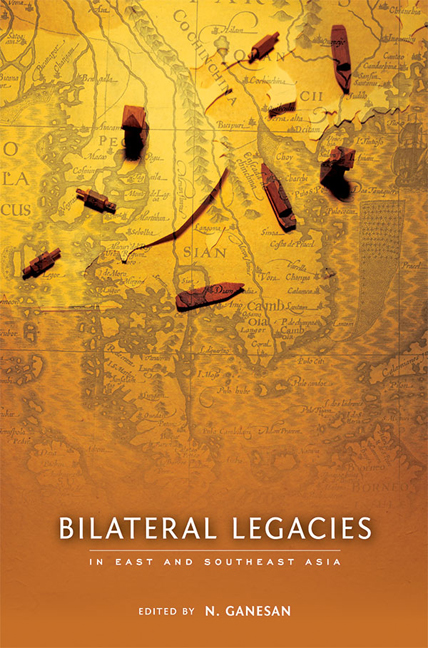Book contents
- Frontmatter
- Contents
- Acknowledgements
- About the Contributors
- 1 Historical Legacies in East and Southeast Asian International Relations
- 2 Historical Overhang or Legacy is What States Make of It: The Role of Realism and Morality in Korea–Japan Relations
- 3 The History Conundrum in Japan's Relations with China
- 4 China–Vietnam Bilateral Overhang or Legacy
- 5 Legacy or Overhang: Historical Memory in Myanmar–Thai Relations
- 6 Glorifying the Inglorious Past: Historical Overhangs or Legacies in Thai–Cambodian Relations
- 7 Comparing Bilateral Overhangs or Legacies in East Asia
- Bibliography
- Index
4 - China–Vietnam Bilateral Overhang or Legacy
Published online by Cambridge University Press: 19 May 2017
- Frontmatter
- Contents
- Acknowledgements
- About the Contributors
- 1 Historical Legacies in East and Southeast Asian International Relations
- 2 Historical Overhang or Legacy is What States Make of It: The Role of Realism and Morality in Korea–Japan Relations
- 3 The History Conundrum in Japan's Relations with China
- 4 China–Vietnam Bilateral Overhang or Legacy
- 5 Legacy or Overhang: Historical Memory in Myanmar–Thai Relations
- 6 Glorifying the Inglorious Past: Historical Overhangs or Legacies in Thai–Cambodian Relations
- 7 Comparing Bilateral Overhangs or Legacies in East Asia
- Bibliography
- Index
Summary
The main aim of this chapter is to analyse and assess China–Vietnam relations and the legacy of history. The study outlines the development of bilateral relations between China and Vietnam both historically and contemporarily with a focus on the latter period. Existing and potential issues of dispute are identified and assessed. The legacy of the long historical interaction is discussed in the context of the contemporary relationship.
The chapter is structured as follows: First, the China–Vietnam relationship is outlined both historically and contemporarily. Second, the existing and potential issues of dispute in the current relationship are identified and assessed. Third, the legacy of historical interaction is discussed. Fourth, the study is concluded by a summary of the development of the China–Vietnam relationship together with a broader discussion.
HISTORICAL RELATIONS
Two parallel processes marked the period of direct Chinese rule over Vietnam from 111 BC to AD 939. One was the colonization of Vietnam by Chinese migrants and the other was the Vietnamese drive to regain political independence from the Chinese Empire. Apart from a steady migration from China to Vietnam of people such as administrators, farmers and landlords, there were also persons seeking refuge from political upheavals in other parts of the Chinese Empire.
During the more than one thousand years of direct Chinese rule over Vietnam, a number of rebellions occurred. From the Trung rebellion, in the first century AD (40–43) — a genuinely Vietnamese one — to the Ly rebellion, in the sixth century, periods of dependence and semi-independence alternated, with the latter gradually becoming more predominant. The Chinese migration that aimed at colonizing Vietnam gradually led to the emergence of a new Sino–Vietnamese ruling class, a social and economic decolonization of Vietnam, and efforts to establish political independence from the Chinese Empire. This led to new rebellions, but they all failed due to the strength of the Chinese Empire. After the fall of the Tang dynasty, in AD 907, the prospects for Vietnamese independence increased and, in AD 939, Vietnam regained complete independence.
- Type
- Chapter
- Information
- Bilateral Legacies in East and Southeast Asia , pp. 76 - 106Publisher: ISEAS–Yusof Ishak InstitutePrint publication year: 2015



